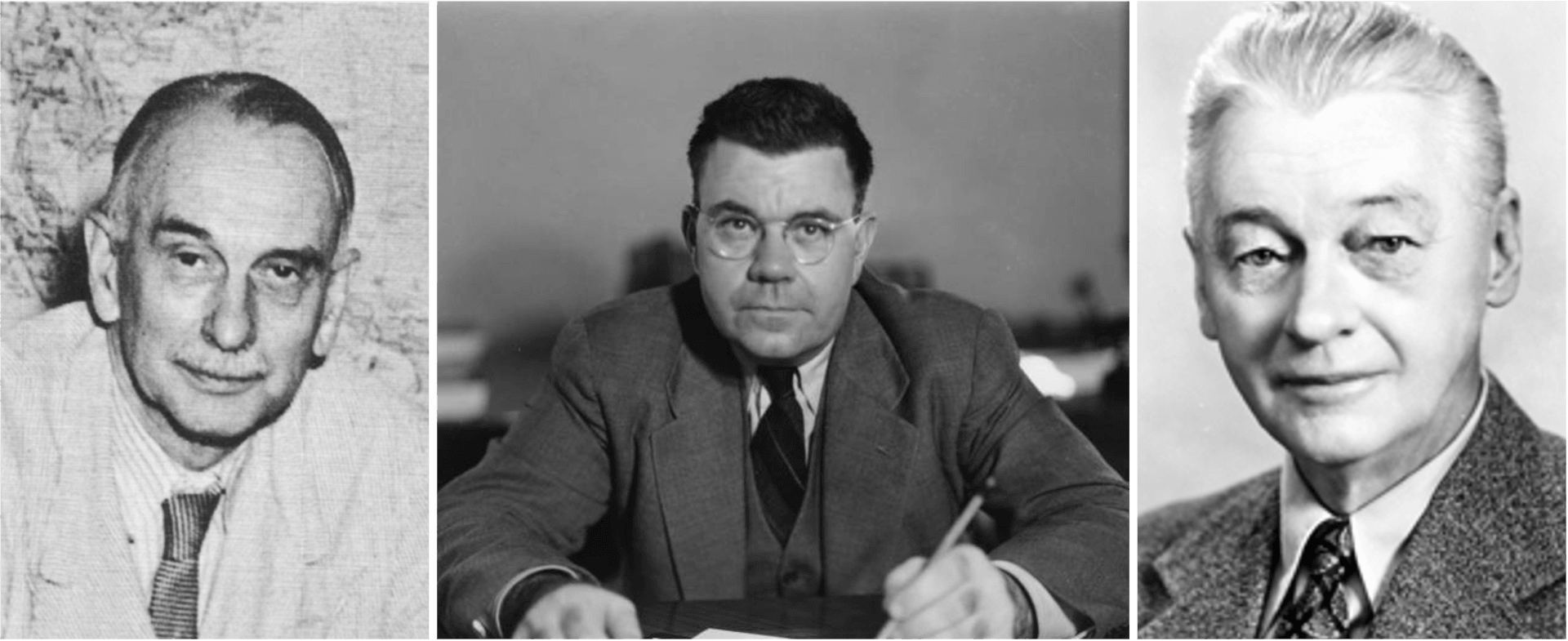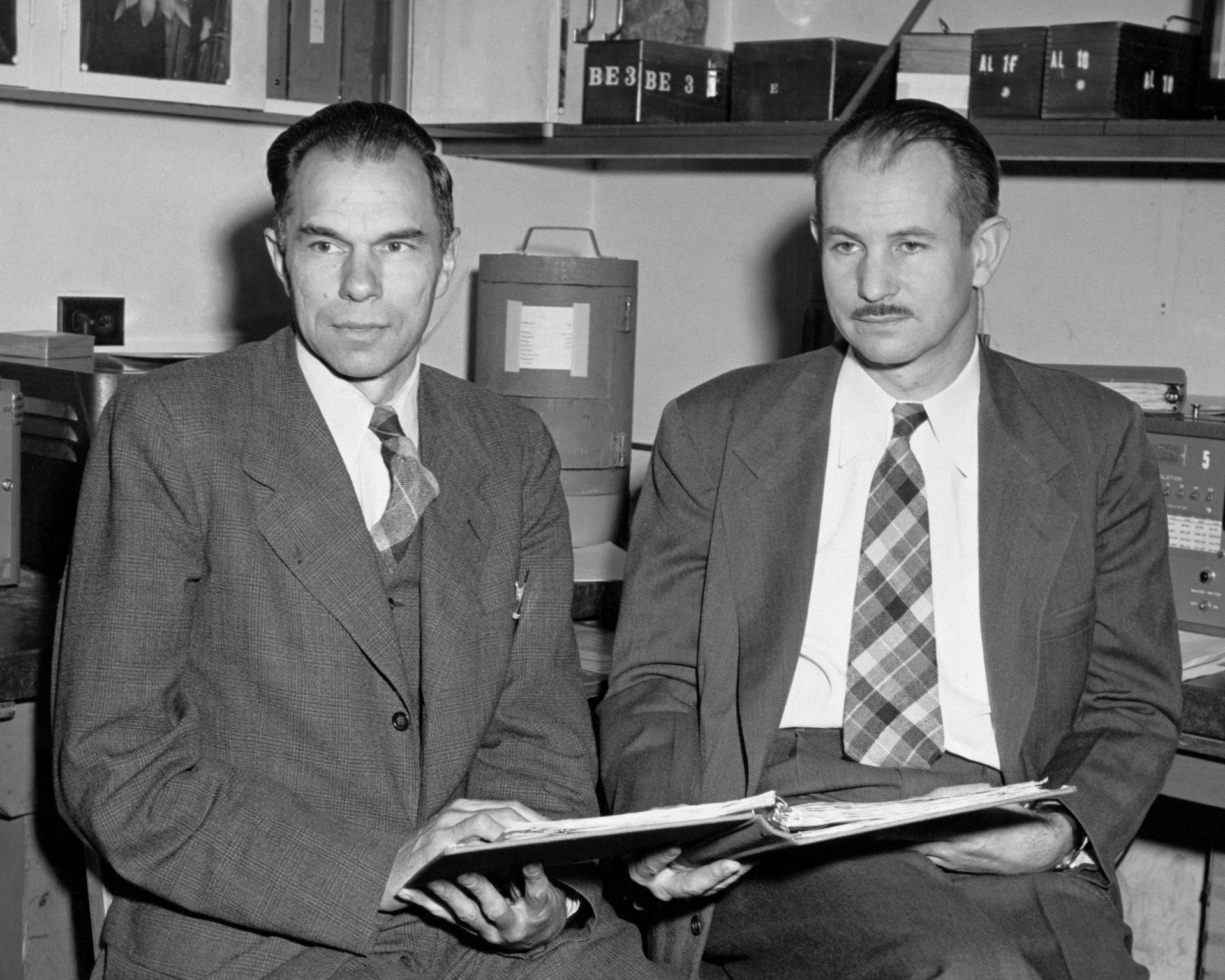How the Discovery Papers on Plutonium Were Finally Published After World War II
In 1946, three physicists discussed via mail whether it was time to publish results that had been withheld during the war.

In one of the back rooms of the APS Long Island editorial office, a small trove of archived documents is collecting dust. Many date back decades and aren’t particularly exciting — old journal copies, APS governance documents, and the like. But occasionally, something interesting crops up.
Recently, I was rooting through these archives, looking for some old journal correspondence, when I came across a folder of letters from the 1940s. The box containing it once sat in the basement of the late Peter Adams, the former APS deputy editor in chief and longtime editor of Physical Review B. Peter cared deeply about the Society and had taken it upon himself to preserve the files.
In the letters, a trio of leading physicists debated when to finally publish secretive research that shaped the creation of nuclear weapons.
During World War II, the editors of Physical Review — fearing that German scientists could use American research to build an atomic bomb — decided to withhold from publication research relevant to the Manhattan Project. It wasn’t until 1946, many months after the end of the war, that the withheld studies were finally published.
The archived letters — from the spring of 1946 — reveal the discussions that took place beforehand.
On March 5, 1946, the longtime editor of Physical Review, John T. Tate Sr., sent a letter to Edward Condon, the director of the Bureau of Standards and the APS president:
Dear Ed:
I am today forwarding…for publication…a group of Letters to the Editor and articles which had been voluntarily withheld from publication during the war…
In doing this I realize that the appearance of these papers which deal with matters once regarded as classified may result in some publicity and possible criticism in certain quarters. I therefore want to give you as President of the American Physical Society whose servant I am an opportunity to stop the publication if you feel it is unwise.
Tate attached a list of 18 Letters to the Editor (precursors to the Letters of today) and articles on nuclear physics. This included two notable Letters to the Editor with, curiously, the same title — “Radioactive Element 94 from Deuterons on Uranium”— and nearly the same authors — one by Glenn Seaborg, Edwin McMillan, Joseph Kennedy, and Arthur Wahl (Phys. Rev. 69, 366) and one by Seaborg, Wahl, and Kennedy (Phys. Rev. 69, 367).
The first paper, submitted to Physical Review in January 1941, reported results on the “bombardment of uranium with deuterons,” which turned uranium into neptunium. Some of this neptunium decayed into what the scientists suspected could be a new “element 94,” later named plutonium — a finding the authors confirmed in the second paper, submitted in March. Seaborg and McMillan shared the 1951 Nobel Prize in Chemistry for this work.

Three weeks later, on March 26, Condon responded to Tate:
…I fully concur in your judgment that further delay serves no useful purpose, and would do actual harm in interfering with research progress unnecessarily. However, the atmosphere has been so charged with spy scare hysteria that I think we want to be in the position of having checked every possible way…
Condon suggested that Tate contact Richard Tolman, who had just stepped down as the chairman of the Committee on Declassification for the Manhattan Project. Tate obliged: On March 29, Tate sent Tolman a letter asking for his thoughts “on the propriety of publishing” the papers. Tate added:
The authors of these papers have all been consulted recently and are in favor of publishing them... Since Dr. Condon’s letter was delayed three weeks, I am afraid that it will be a little late to stop publication of the Letters to the Editor. My judgment is there is nothing in them which is not already indicated…in the Smyth report…
The Smyth Report, published just days after the bombings of Hiroshima and Nagasaki, outlined the Manhattan Project and discussed plutonium in some detail.
Six days later, on April 4, Tolman sent Tate a long reply:
It seems clear to me that such an article is the property of the author and that neither he, nor the Editor of the Physical Review, is under any legal obligation to consult with anyone as to its publication…
On the other hand, from the point of view of what is prudent and in the best interests of the country, it seems to me that additional factors enter. In the first place, there is the possibility that the article might disclose something in contradiction to the provisions of the general Espionage Act…
Hence as a prudent man, I should seek competent advice as editor before publishing…
…it is my guess that most if not all of the material involved would fall in the category which is now being declassified, in the case of Manhattan District reports. It would not surprise me, however, if there were a few items in them which should be eliminated before publication, in the interests of national security…
Tolman recommended that Tate consult with John R. Ruhoff, who was leading Manhattan Project declassification efforts.
Tolman also included two attachments. The first was a letter that Tolman had sent to author George Placzek with a similar message — essentially, you are not required to consult Ruhoff, but it would be prudent.
The second attachment was a five-page document dated Feb. 4, 1946, titled, in all caps, “STATEMENT OF RECOMMENDATIONS OF RELEASE OF ATOM BOMB PROJECT INFORMATION,” signed by Robert Bacher, Arthur Compton, Ernest Lawrence, J. Robert Oppenheimer, Frank Spedding, Harold Urey, and Richard Tolman (quite an author list and document to hold).

The statement is a request to publish research that was withheld during World War II — a plea for transparency. “The army wishes to modify the existing secrecy restrictions which were necessitated by the War, and desires to make useful scientific and technical information generally available, where this can be done without endangering our national security,” it reads.
The document does not advocate for the release of specific information but notes that “nearly everyone will agree that there is much that can be disclosed at the present time.”
Tolman’s letter to Tate was stamped “Received” at Physical Review on April 8. Journals were typically printed some time after the beginning of the month, so Tate may have waited for Tolman’s reply before the volume was printed. There is no further correspondence in the folder.
As an editor, I know that one must make important decisions with incomplete information. It is possible that Tate, as editor, called Ruhoff — or he may have been confident in his own assessment.
Regardless of how and when Tate made the final decision to let the issue proceed, many of the papers, including those outlining the discovery of plutonium, were published in the April 1946 issue of Physical Review.
These letters highlight Physical Review’s role not only as a journal, but as a strategic mediator of research with profound relevance for the war. The letters make clear, too, the extent to which leading physicists wrestled — with themselves and with one another — over the role and timing of scholarly publishing, and of the tension between open science and national security that World War II laid bare.
Robert Garisto
Robert Garisto is the chief editor of Physical Review Letters.